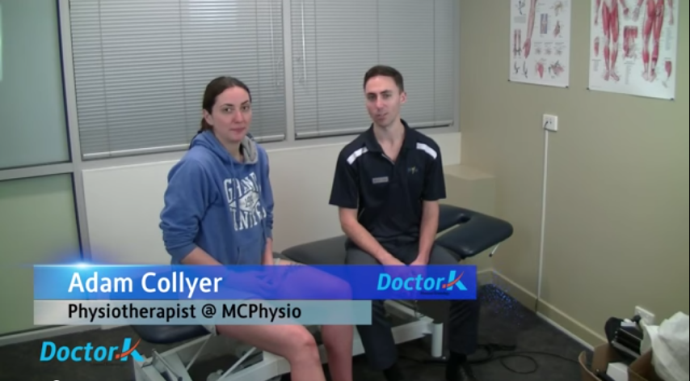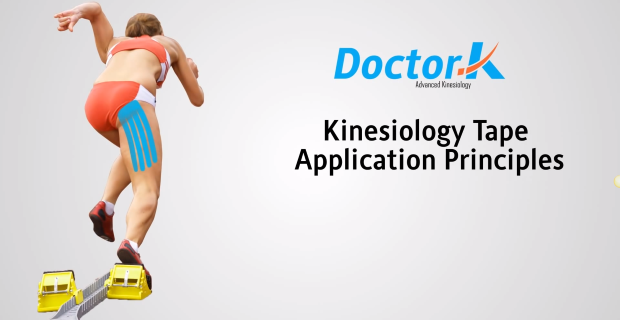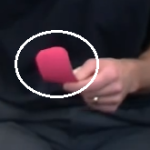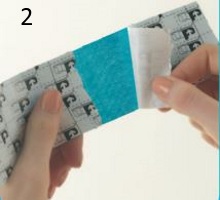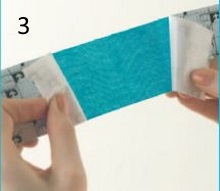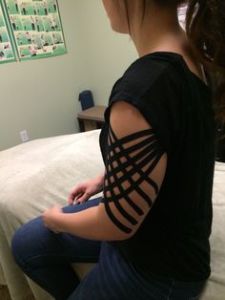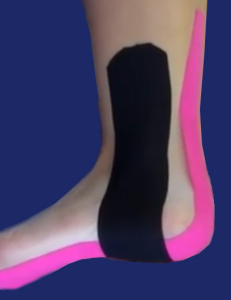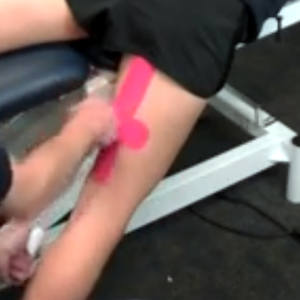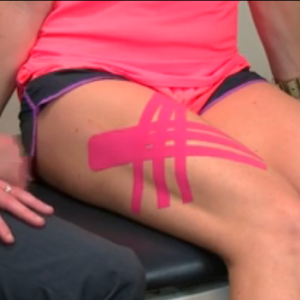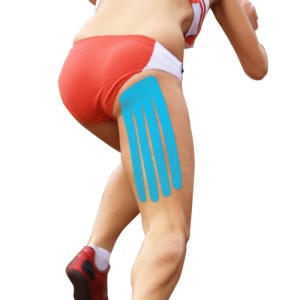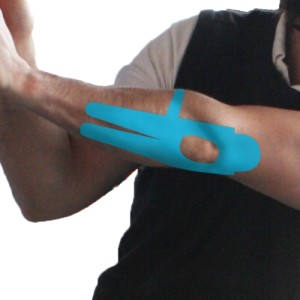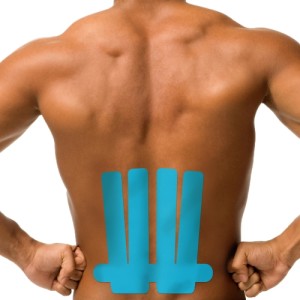Groin injuries can be a painful and debilitating, and really restrict the mobility of the athlete or patient. Thankfully there are a some target strategies for treatment, and one in which we will focus on in this article is applying Kinesiology Tape for Groin Pain.
Kinesiology tape are common method for treating sports injuries and musculoskeletal conditions, by helping to reduce inflammation, ease pain, relax and rehabilitate muscles, as well as support muscles especially during sport events. As kinesiology tapes can be applied to many parts of the body, kinesiology taping can be applied to ease groin pain as well…
The Groin Muscles
The groin is located in between the abdomen and thigh, beside the pubic 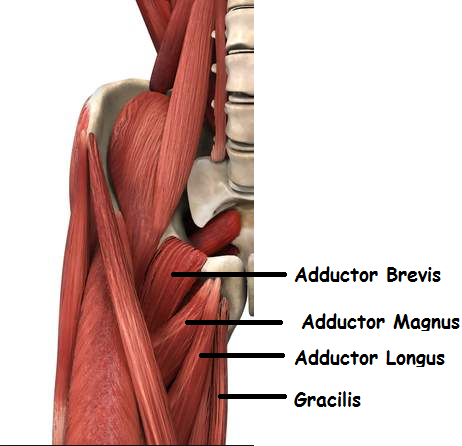 bone. It consists of five groin muscles or hip adductor muscles namely:
bone. It consists of five groin muscles or hip adductor muscles namely:
- adductor magnus
- adductor brevis
- adductor longus
- pectineus
- gracilis
The main function of these muscles is for hip joint adduction as well as the rotation, flexion and extension of the hip joint. Strain or injury of the adductor muscles causes groin pain.
Kinesiology Taping for Groin Pain
[youtube]https://www.youtube.com/watch?v=Li4HfQjS1Pw[/youtube]
What you will need:
- Dr K Kinesiology tape
- A pair of scissors
What you should do:
- Place leg in an open position.
- Measure tape from the inside of the thigh down the length – up to two-thirds of the thigh.
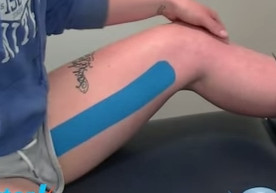
- Now cut the corners to round them, this will help prevent peeling of the tape.
- Create an anchor tab at one edge of the tape by folding the tape 2-3 inches from the edge. Tear the backing (paper) at the line.
- Now put the base of the tape high up on the adductor muscle with no tape tension, and rub it to stick properly.
- Peel the remaining backing (paper) of the tape then stick the tape down applying 50% tension. Apply the end of the tape (around 1 inch) without any tension.
- Measure another piece of Kinesiology Tape to be used to run horizontally across the
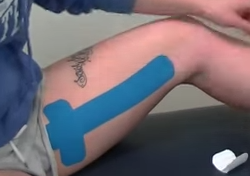 affected area. Do the same preparation by rounding the corners of the tape to avoid peeling. Tear the backing at the middle, exposing the tape at the center.
affected area. Do the same preparation by rounding the corners of the tape to avoid peeling. Tear the backing at the middle, exposing the tape at the center. - Now put the kinesiology tape on the inside of your thigh (or the affected area). Apply with 75% tension, leaving the edges without any tension.
What you should remember:
- Avoid using lotions or any type of moisturizer on the area where the kinesiology tape will be put on to avoid easy peeling.
- When dressing, be careful to avoid clothing catching and peeling the tape
- After showering, pat dry the tape application to peeling the tape.
- Use snug fit shorts as a support to keep the tape from peeling off your skin.
What is Groin Pain?
At some point, one could experience groin injury which could cause pain to the concerned area. Minor groin injuries would usually heal on its own, and targeted treatments like kinesiology taping to relieve the pain and speedy up recover. On the other hand, severe groin pain which causes great discomfort while sitting or walking should be given special medical attention.
Possible Causes of Groin Pain:
- Sports-related activities or recreational activities such as football, rugby, tennis, soccer, skiing, skating and basketball.
- Fall or direct blow to the groin.
- Leg was turned in an abnormal position.
- Exercise, running, lifting, pushing and pulling activities can lead to strained or torn groin muscle.
- Various health conditions like:
- inguinal hernia
- mumps
- kidney stones
- bursitis
- avulsion fractures
- stress fractures
- hydrocele
- epididymitis
- orchitis.
Treatment for Groin Pain
Home Care:
- Take a rest and protect the affected groin area for about 2 weeks. It is also advisable to temporarily stop or to change the activities that have caused you groin pain. It is best to avoid doing intense activities which affects the groin.
- Take pain relievers or anti-inflammatory drugs such as Naproxen and Ibuprofen to help relieve the pain.
- Apply cold pack to the concerned groin area to reduce swelling.
- Wear underwear which helps support the injured area; for males, jockey shorts with a snug fit and for females, work-out underwear or shorts with a snug fit.
- Another excellent way of relieving groin pain would be Kinesiology Taping.
Seek medical care when:
- Experiencing burning or severe pain
- Experiencing continuous groin pain without any apparent reason.
- Changes such as testicular growth or scrotum swelling.
- Blood in urine.
Were we able to help you?
Our main purpose is to educate you with the most-updated sports-related medical techniques available. And one of such includes the healing and therapeutic properties of kinesiology taping.
We hope we were able to help you through our discussion above. You can like or share this article if you want to help educate others about the wonders of Kinesiology Taping. If there are other topics you’d want us to cover, your suggestions will be deeply appreciated…

